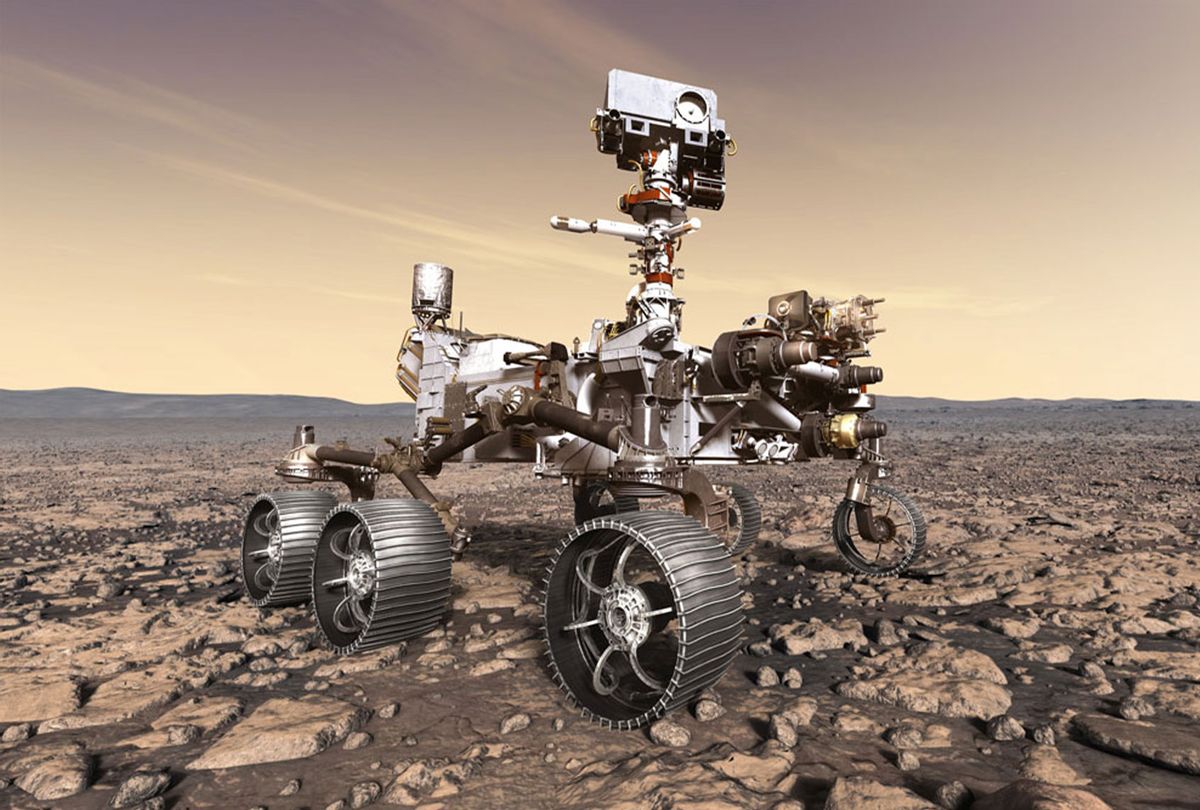NASA believes it knows why Perserverance's first Mars rock sample went missing.
As Salon previously reported, earlier this month scientists attempted to collect samples from the Red Planet and deposit them in one of the Perseverance rover's 43 collection tubes. At first, everything appeared to be running smoothly: the rover drilled a tiny finger-size hole in the rock, and photos showed an obvious hole in said rock. But a follow-up analysis revealed that there were no rock samples in the tube.
What happened?
After analyzing data and photos from the rover for several days, NASA's Perseverance team determined that the rock most likely crumbled into "small fragments."
"It appears that the rock was not robust enough to produce a core," Louise Jandura, chief engineer for the sampling system, wrote in a NASA blog post on Wednesday. "The material from the desired core is likely either in the bottom of the hole, in the cuttings pile, or some combination of both."
Cue spooky music.
"Both the science and engineering teams believe that the uniqueness of this rock and its material properties are the dominant contributor to the difficulty in extracting a core from it," Jandura further explained. "Therefore, we will head to the next sampling location in South Seitah, the farthest point of this phase of our science campaign."
Perseverance first selected a rock in Jezero Crater, a 28 mile-wide impact crater and former lake which, scientists believe, is an ideal place to look for evidence of ancient microbial life on Mars. But it turns out that that rock "did not cooperate this time," Jandura said.
"It reminds me yet again of the nature of exploration," Jandura said. "A specific result is never guaranteed no matter how much you prepare. Despite this result, science and engineering have progressed."
Perseverance is a sample-return mission, meaning that Perseverance will collect and store Martian rock and soil samples, which will eventually be returned to Earth. Obviously, obtaining the sample is key to this mission, which is why NASA scientists experienced "a rollercoaster of emotions," according to Jandura, when the sample wasn't there.
Sample return missions are extremely rare due to their expense; indeed, there has never been a sample return mission from another planet. While the mission to return samples from Mars has yet to be fully planned, NASA scientists say that if all goes to plan we could have samples from Mars back on Earth by 2031.
Let's hope they can obtain a sample in South Seitah next time around, in September.
"Based on rover and helicopter imaging to date, we will likely encounter sedimentary rocks there that we anticipate will align better with our Earth-based test experience," Jandura said.
Want more health and science stories in your inbox? Subscribe to Salon's weekly newsletter The Vulgar Scientist.



Shares